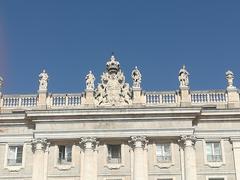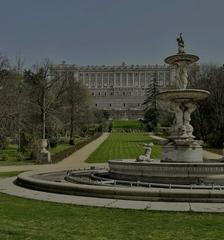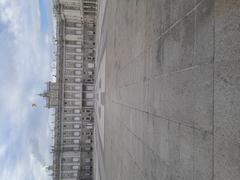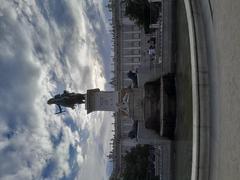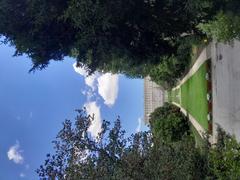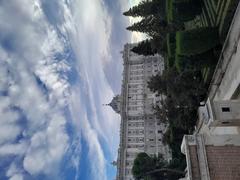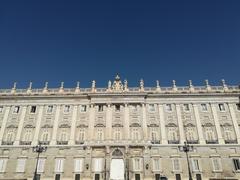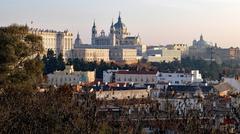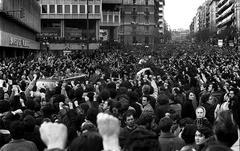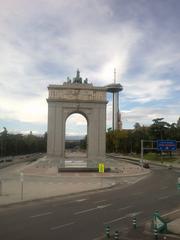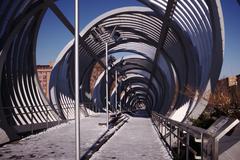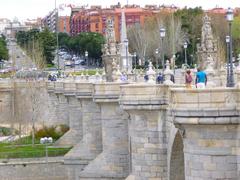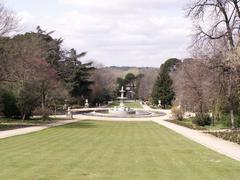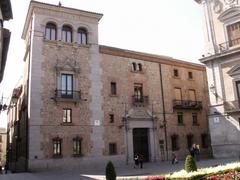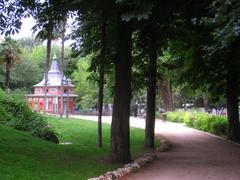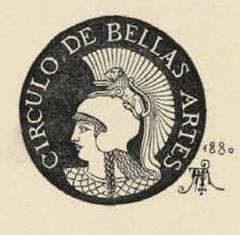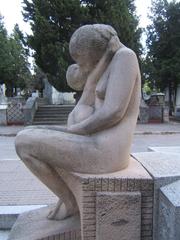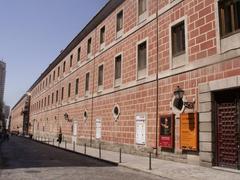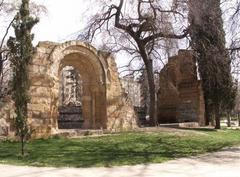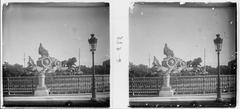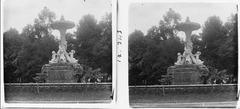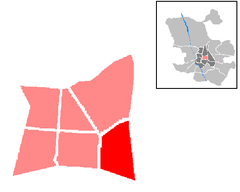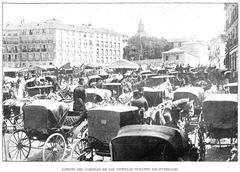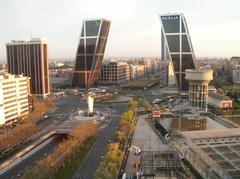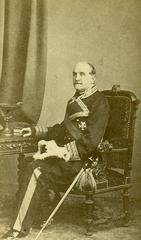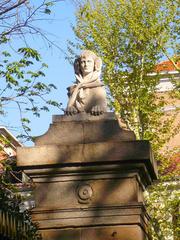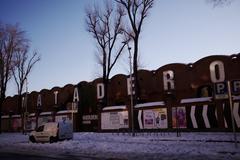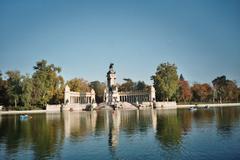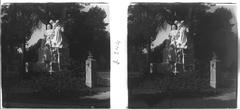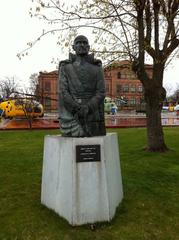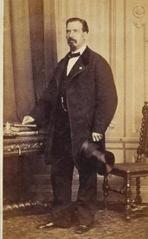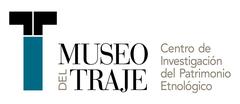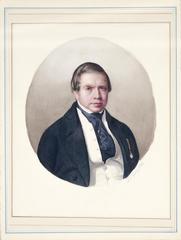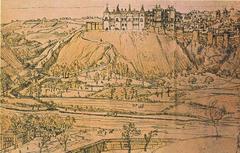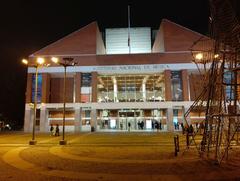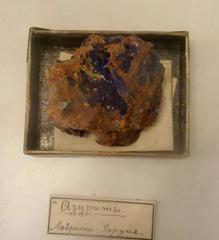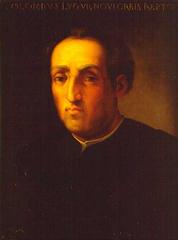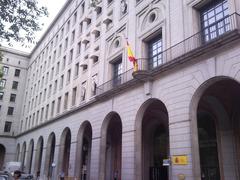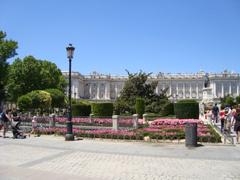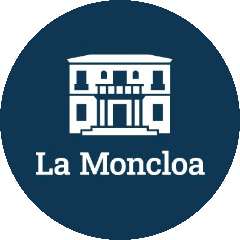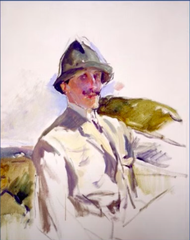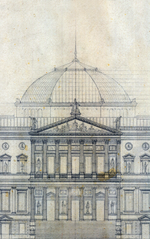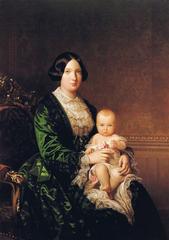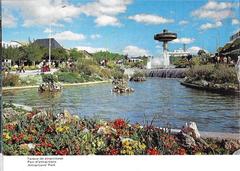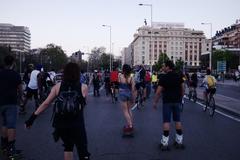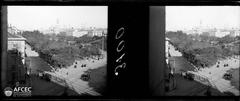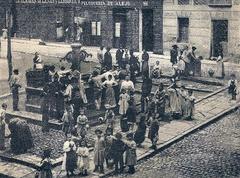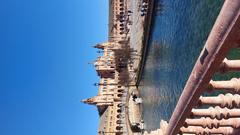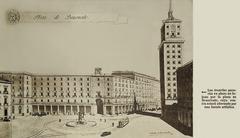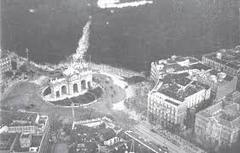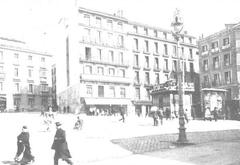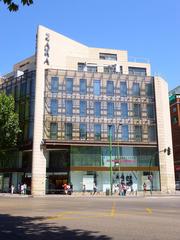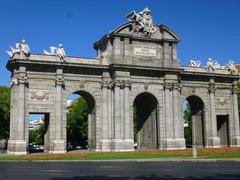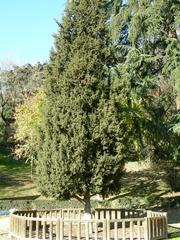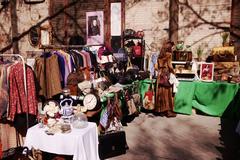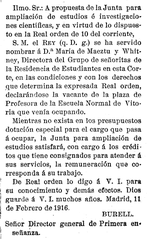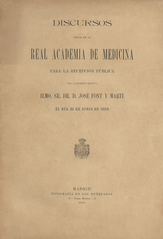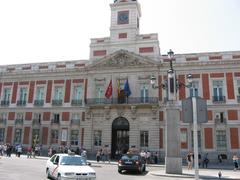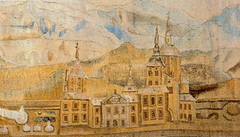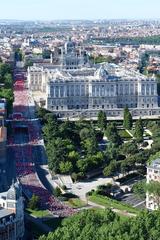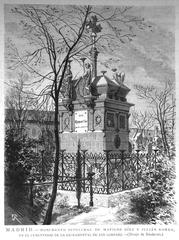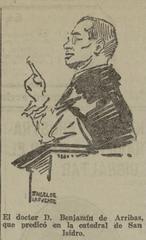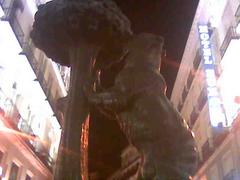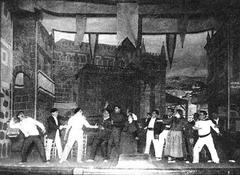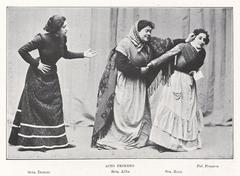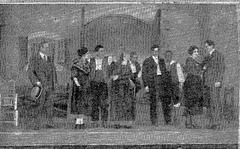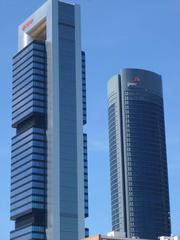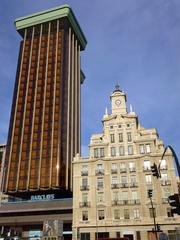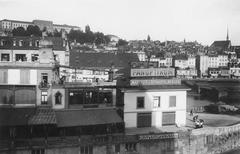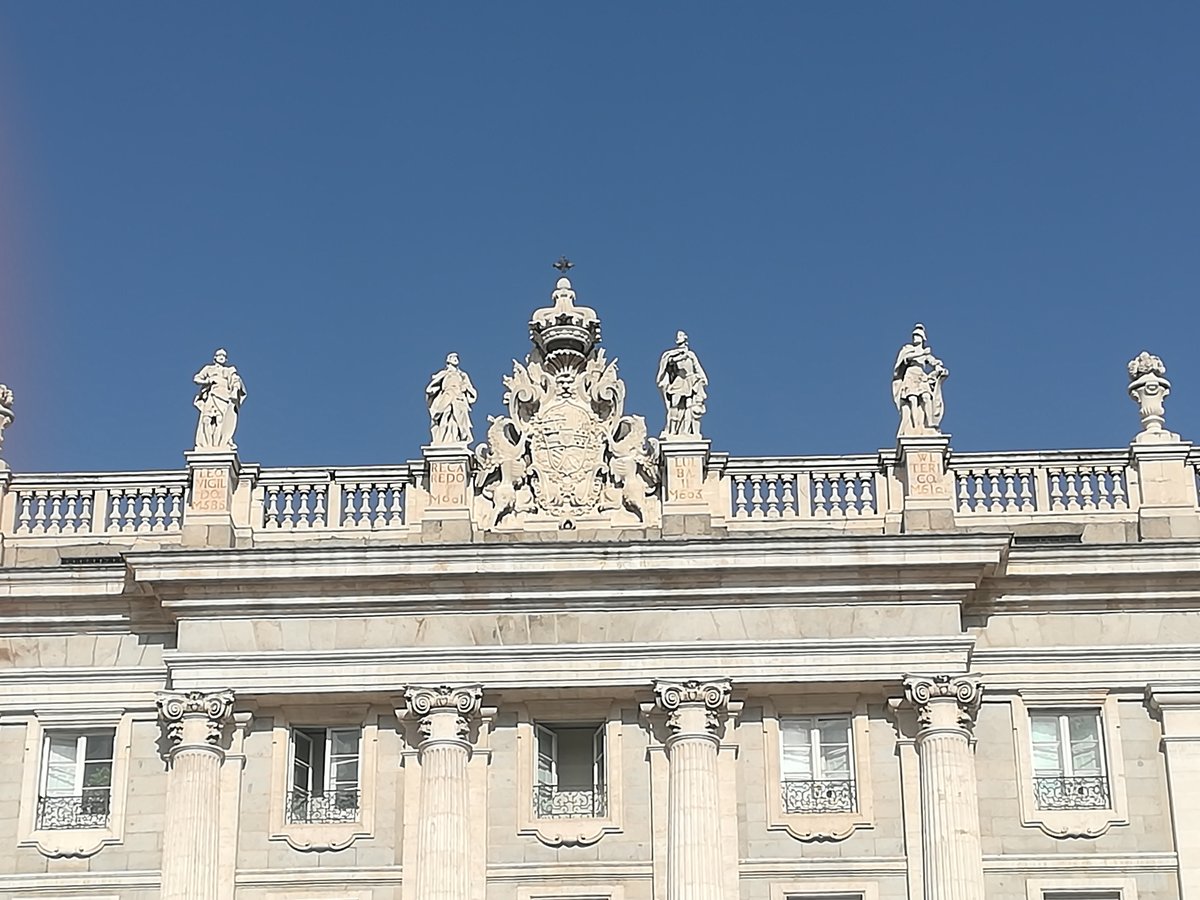
Royal Palace of Madrid: Visiting Hours, Tickets, and Historical Sites
Published Date: 16/07/2024
Introduction to the Royal Palace of Madrid
The Royal Palace of Madrid, or ‘Palacio Real de Madrid’ in Spanish, is a breathtaking example of Baroque architecture and a cornerstone of Spanish cultural heritage. Located in the heart of Madrid, this grandiose palace stands as a testament to the opulence and historical significance of the Spanish monarchy. Originally built on the ruins of the old Alcázar, which was destroyed by fire in 1734, the current palace was commissioned by King Philip V and brought to life by the vision of Italian architects Filippo Juvarra and Giovanni Battista Sacchetti. The construction spanned from 1738 to 1764, culminating in a majestic structure that has since served as the primary residence for the Spanish royal family and a venue for pivotal historical events (Patrimonio Nacional).
This guide aims to provide comprehensive information for anyone planning to visit this iconic landmark. From its rich historical background and architectural marvels to practical visitor tips, we cover everything you need to know to make the most of your visit to the Royal Palace of Madrid. Whether you’re a history enthusiast, an art lover, or simply a traveler looking to explore Madrid’s historical sites, this guide will offer valuable insights and tips to enhance your experience (Audiala).
Table of Contents
- [Introduction](#introductionintroduction-to-the-royal-palace-of-madrid)
- [History of the Royal Palace of Madrid](#history-of-the-royal-palace-of-madridhistory-of-the-royal-palace-of-madrid)
- [Origins and Early Construction](#origins-and-early-constructionorigins-and-early-construction)
- [Architectural Evolution](#architectural-evolutionarchitectural-evolution)
- [Historical Significance](#historical-significancehistorical-significance)
- [Art and Cultural Heritage](#art-and-cultural-heritageart-and-cultural-heritage)
- [Visitor Information](#visitor-informationvisitor-information)
- [Visiting Hours](#visiting-hoursvisiting-hours)
- [Ticket Prices](#ticket-pricesticket-prices)
- [Guided Tours](#guided-toursguided-tours)
- [Travel Tips](#travel-tipstravel-tips)
- [Nearby Attractions](#nearby-attractionsnearby-attractions)
- [Modern-Day Use and Preservation](#modern-day-use-and-preservationmodern-day-use-and-preservation)
- [Conclusion](#conclusionconclusion)
- [FAQ](#faqfaq)
History of the Royal Palace of Madrid
Origins and Early Construction
The Royal Palace of Madrid, known as ‘Palacio Real de Madrid’ in Spanish, stands on the site of the old Alcázar of Madrid, a fortress originally built in the 9th century by the Moors. The Alcázar served as a royal residence for the Spanish monarchy until it was destroyed by fire on Christmas Eve in 1734. The current palace was commissioned by King Philip V, the first Bourbon king of Spain, who sought to create a grandiose residence that would reflect the power and prestige of the Spanish crown.
Construction of the new palace began in 1738 under the direction of Italian architect Filippo Juvarra, who was later succeeded by Giovanni Battista Sacchetti. The design was inspired by Bernini’s plans for the Louvre in Paris, and the palace was built using limestone and granite, materials that were both durable and aesthetically pleasing. The construction took 26 years to complete, with the final touches added in 1764 during the reign of King Charles III. The palace was officially inaugurated in 1764, marking the beginning of its use as the primary residence of the Spanish royal family.
Architectural Evolution
The Royal Palace of Madrid is a stunning example of Baroque architecture, characterized by its grandiose scale, elaborate decorations, and dramatic use of light and shadow. The palace covers an area of 135,000 square meters and contains 3,418 rooms, making it one of the largest palaces in Europe. The exterior features a symmetrical façade with a central courtyard, known as the ‘Plaza de la Armería,’ which is flanked by two wings that house the royal apartments and state rooms.
Over the centuries, the palace has undergone several renovations and expansions to accommodate the changing needs of the monarchy. Notable additions include the Sabatini Gardens, designed by Italian architect Francesco Sabatini in the late 18th century, and the Campo del Moro Gardens, which were landscaped in the 19th century. The interior of the palace is equally impressive, with opulent rooms decorated in a variety of styles, including Rococo, Neoclassical, and Empire.
Historical Significance
The Royal Palace of Madrid has played a central role in the history of Spain, serving as the official residence of the Spanish royal family and the site of numerous important events. One of the most significant events in the palace’s history was the signing of the Treaty of Madrid in 1801, which ended the War of the Oranges between Spain and Portugal. The palace also served as the headquarters for Napoleon’s brother, Joseph Bonaparte, during the French occupation of Spain from 1808 to 1813.
In addition to its political significance, the palace has also been a cultural hub, hosting numerous state banquets, royal weddings, and other ceremonial events. The palace’s Throne Room, with its red velvet walls and gilded decorations, has been the setting for many important occasions, including the swearing-in of new Spanish monarchs. The palace’s Royal Chapel, with its stunning frescoes and ornate altar, has also been the site of many royal baptisms and weddings.
Art and Cultural Heritage
The Royal Palace of Madrid is home to an extensive collection of art and historical artifacts, reflecting the rich cultural heritage of Spain. The palace’s Royal Armory, one of the finest in the world, contains a vast array of weapons and armor dating back to the 13th century. The palace also houses a significant collection of tapestries, many of which were woven in the famous Royal Tapestry Factory in Madrid.
One of the most notable features of the palace is its collection of paintings, which includes works by some of the most renowned artists in history. The palace’s Royal Gallery contains masterpieces by artists such as Velázquez, Goya, and Caravaggio, as well as a series of frescoes by the Italian painter Corrado Giaquinto. The palace’s Royal Pharmacy, with its original 18th-century furnishings and collection of medicinal herbs and potions, offers a fascinating glimpse into the history of medicine.
Visitor Information
Visiting Hours
The Royal Palace of Madrid is open daily from 10 AM to 8 PM. However, hours may vary on holidays. For the most current hours, always check the official website before planning your visit.
Ticket Prices
General admission is €12, with discounts available for students and seniors. Tickets can be purchased here.
Guided Tours
Guided tours are available in multiple languages and can be booked in advance. Audio guides are also available for a self-guided experience. Booking a guided tour in advance is recommended, especially for specific language preferences.
Travel Tips
- Best Time to Visit: Early morning or late afternoon to avoid crowds. Weekdays are generally less crowded, and the off-peak season (October to March) offers a more relaxed experience.
- Photography: Photography is allowed in certain areas, but flash and tripods are prohibited. In some rooms, photography may be completely restricted to preserve the artworks and furnishings.
- Accessibility: The palace is wheelchair accessible, with ramps and elevators available for easy navigation. Wheelchairs can be borrowed at the entrance. For more details, visit the accessibility section of the official website.
- Dress Code: While there is no strict dress code, it is advisable to dress modestly out of respect for the site’s cultural significance. Comfortable walking shoes are recommended as the tour involves considerable walking.
Nearby Attractions
- Almudena Cathedral: Located adjacent to the palace, this cathedral blends neo-Gothic, neo-Romanesque, and neo-Classical styles. Entrance is free, but donations are welcome.
- Plaza Mayor: A historic square located within walking distance, perfect for a leisurely stroll and some local cuisine.
- Retiro Park: A beautiful and expansive park ideal for relaxation and recreation.
Modern-Day Use and Preservation
Today, the Royal Palace of Madrid is no longer the primary residence of the Spanish royal family, who now reside at the more modest Zarzuela Palace on the outskirts of Madrid. However, the Royal Palace remains an important symbol of the Spanish monarchy and is used for state ceremonies and official functions. The palace is also open to the public, attracting millions of visitors each year who come to marvel at its architectural splendor and historical significance.
Efforts to preserve and maintain the palace are ongoing, with regular restoration projects aimed at protecting its architectural and artistic heritage. In recent years, the palace has undergone extensive renovations to restore its façade, repair its roof, and conserve its interior decorations. These efforts ensure that the Royal Palace of Madrid will continue to be a cherished landmark for future generations.
Conclusion
The Royal Palace of Madrid is a must-visit for history buffs and architecture enthusiasts alike. From its grandiose rooms to its rich cultural heritage, the palace offers a glimpse into the opulent past of the Spanish monarchy. Don’t forget to check out other historical sites in Madrid and download our Audiala app for more travel tips and updates.
FAQ
Q: What are the visiting hours for the Royal Palace of Madrid?
A: The palace is open daily from 10 AM to 8 PM, though hours may vary on holidays.
Q: How much are tickets to the Royal Palace of Madrid?
A: General admission is €12, with discounts for students and seniors.
Q: Are guided tours available?
A: Yes, guided tours are available in multiple languages and can be booked in advance.
Q: Is the Royal Palace of Madrid wheelchair accessible?
A: Yes, it has ramps and elevators for wheelchair users.
For more detailed information on the history and significance of the Royal Palace of Madrid, you can visit the official Royal Palace of Madrid website.
Summary and Key Points
Visiting the Royal Palace of Madrid is an enriching experience that offers a deep dive into Spain’s royal history, architectural grandeur, and cultural heritage. From the magnificent Throne Room adorned with red velvet walls to the historical artifacts housed in the Royal Armory, every corner of the palace narrates a story of opulence and power. The palace’s extensive art collection, including masterpieces by Velázquez, Goya, and Caravaggio, adds another layer of cultural richness, making it a must-visit for art aficionados (Patrimonio Nacional).
While the palace is no longer the primary residence of the Spanish royal family, it remains an important symbol of the monarchy and a venue for state ceremonies and official functions. Ongoing restoration projects ensure that this architectural gem is preserved for future generations to admire. Nearby attractions like the Almudena Cathedral and Plaza Mayor further enhance the visitor experience, offering additional historical and cultural insights (Audiala).
In summary, the Royal Palace of Madrid is not just a historical monument but a living testament to Spain’s rich cultural and political legacy. Plan your visit to explore this magnificent landmark and immerse yourself in the splendor of Spain’s royal heritage. For more travel tips and updates, download our Audiala app and follow us on social media.
